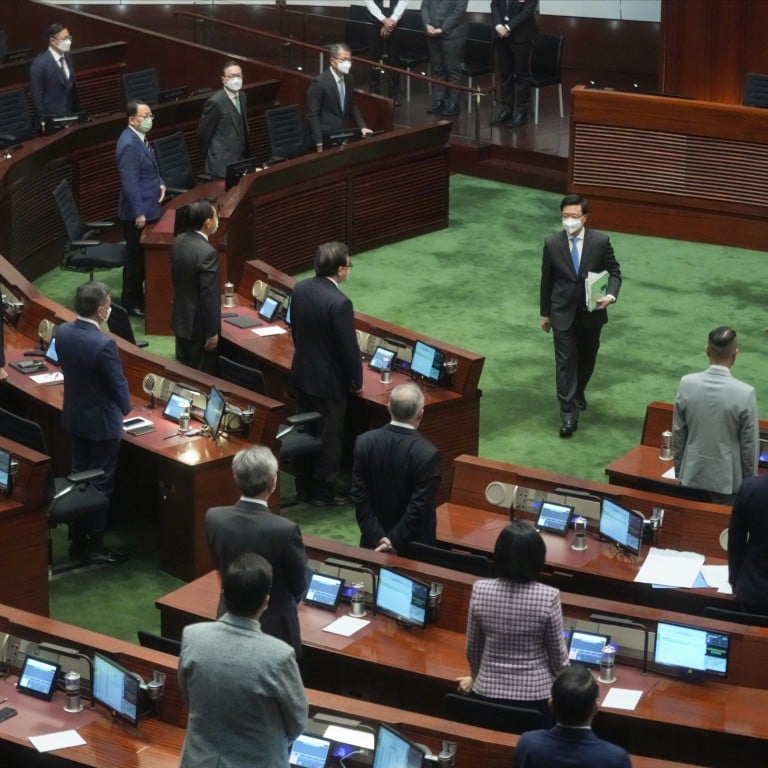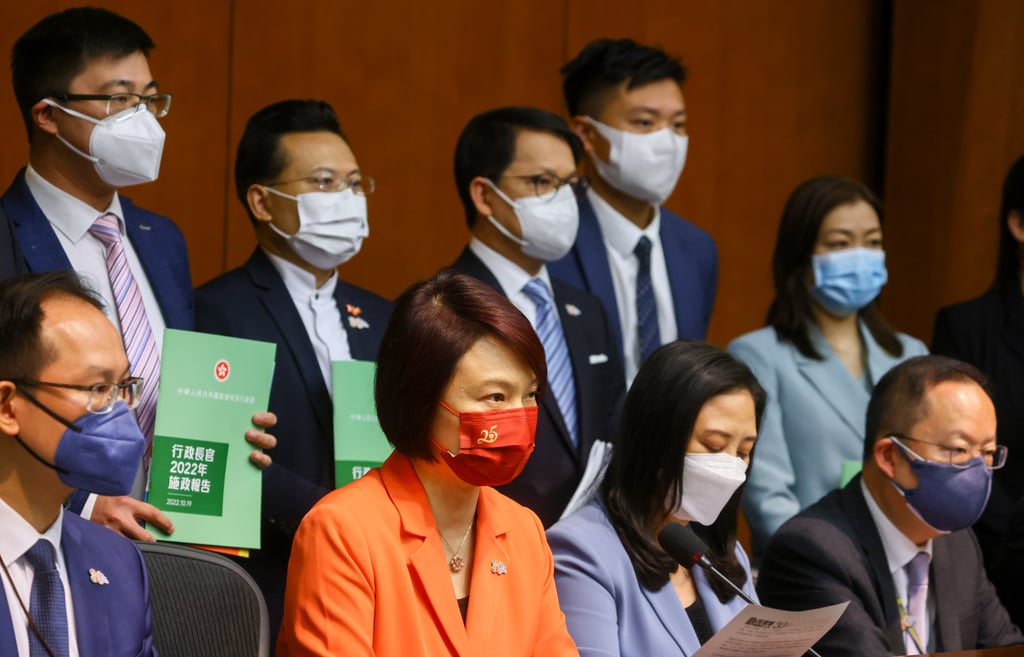
John Lee’s policy address needs proper evaluation, not just praise
- Lee’s list of more than 100 KPIs looks impressive, but not all hold up under scrutiny
- Some are superficial measures that don’t fully address structural problems, while others come with a ‘pandemic permitting’ get-out clause
Starry Lee Wai-king, chairwoman of the Democratic Alliance for the Betterment and Progress of Hong Kong, called it a “forward-looking policy address”.
That’s all well and good, but aren’t policy addresses, by definition, forward looking? Sure, there was no mention of Hong Kong having begun as a small fishing village, and that’s refreshing. And we were spared another rendition of the “Under the Lion Rock” song. But we are talking about initiatives the government plans to implement in pursuit of its vision for the city. That’s what policy addresses are for.
So, in that sense, the praise from Beijing on a new style of governance is well deserved. But, as for the policy address indicating an administration “not being afraid of difficulties”, time will tell.

Take, for example, the first KPI in the annex of the address, the only one to focus on lifting underprivileged students out of intergenerational poverty: “No less than 70 per cent of students who complete the one‐year Strive and Rise Programme to achieve improvement in terms of personal development and positive thinking.”
For promoting mental health at all education levels, see KPI No 67; the government plans to distribute educational material from the public health and education initiative “Shall We Talk” to all primary, secondary and tertiary institutions by the end of 2023. That looks like a to-do item more than a performance indicator. And why would a task like this take more than a year to complete?
Scroll down the list of KPIs, and you’ll see that some come with a “pandemic situation permitting” get-out clause. The government cannot use the pandemic as an excuse without having laid out a reopening blueprint.
There are plenty of metrics the government can use now to see whether it is working towards the goal of delivering tangible improvements to people’s lives. Why not use the birth rate, for example – or, perhaps better still, the happiness index?
Alice Wu is a political consultant and a former associate director of the Asia Pacific Media Network at UCLA

